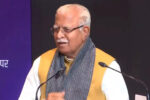The US is accelerating a trade deal with India to diversify supply chains away from China. This move aims to offer India tariff relief and secure critical inputs, with negotiators addressing familiar friction points in agriculture, digital trade, and intellectual property. Both nations are keen to boost bilateral trade significantly.
Shifting Sands: Could a US-India Trade Deal Finally Be on the Horizon?
For years, a comprehensive trade agreement between the United States and India has felt perpetually “just around the corner.” High hopes would bloom, only to wither under the weight of complex negotiations and differing priorities. But something feels different in the air now. The winds of global geopolitics, particularly the evolving relationship between the US and China, might just be creating the perfect conditions for a breakthrough.
It’s no secret that the US has been actively seeking to diversify its supply chains and reduce its reliance on China. This strategic imperative, amplified by recent geopolitical tensions and the lessons learned from pandemic-induced disruptions, is a significant driving force behind the potential shift in the US approach to trade relations with India. Suddenly, India’s burgeoning economy, its vast consumer market, and its skilled workforce look a whole lot more attractive.
Why India is Suddenly More Appealing to the US
But it’s not just about reducing dependence on China. India itself has been making significant strides in economic reform, streamlining regulations and improving its investment climate. While challenges undoubtedly remain, the overall trajectory is one of increasing openness and attractiveness to foreign investors. India’s commitment to strengthening its intellectual property rights regime is another factor weighing positively in the US calculus.
Think of it like this: imagine you’re building a resilient bridge. You wouldn’t want to rely on just one pillar, especially if that pillar is showing signs of strain. India presents a strong, viable alternative pillar – a partner that can help shoulder the load and ensure the stability of global supply chains.

What’s in it for India?
Of course, a trade deal with the US isn’t just beneficial for America. For India, the potential gains are immense. Increased access to the US market would boost exports, spur economic growth, and create countless jobs. It would also attract further foreign investment, driving innovation and technological advancements across various sectors.
Furthermore, a strong trade partnership with the US would send a powerful signal to the global community about India’s commitment to free and fair trade. It would solidify India’s position as a major player on the world stage and further enhance its geoeconomic influence. This could also pave the way for similar agreements with other key partners.
Navigating the Remaining Hurdles to Reach a Final Trade Deal
Despite the encouraging signs, significant hurdles remain. Negotiating a comprehensive trade agreement is a complex and time-consuming process. Both sides have their own priorities and sensitivities, and finding common ground on contentious issues like agricultural subsidies, tariffs, and market access will require skillful diplomacy and a willingness to compromise.
One of the biggest challenges will likely be addressing the US concerns regarding India’s data localization policies and certain intellectual property rights regulations. Similarly, India will likely push for greater access to the US market for its agricultural products and skilled professionals. These are not insurmountable obstacles, but they will require careful negotiation and creative solutions. You might find this article on [India’s growing digital economy](internal-link-example.com) interesting as well.
The Future of US-India Trade: A Pivotal Moment
The possibility of a strengthened trade relationship between the United States and India feels more tangible now than ever before. Driven by a combination of strategic imperatives and economic opportunities, both countries have a compelling incentive to overcome the remaining obstacles and forge a mutually beneficial agreement. The evolving global landscape has created a unique window of opportunity – one that both nations would be wise to seize. Whether this renewed momentum will finally lead to a comprehensive trade deal remains to be seen, but the stakes are high, and the potential rewards are enormous. The next few months will be critical in determining the future trajectory of US-India economic relations, potentially ushering in a new era of collaboration and prosperity.







